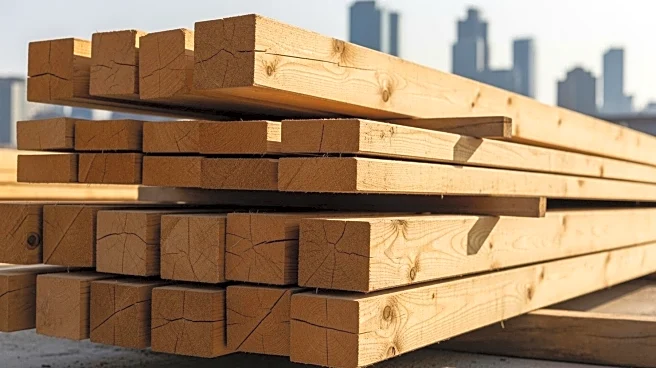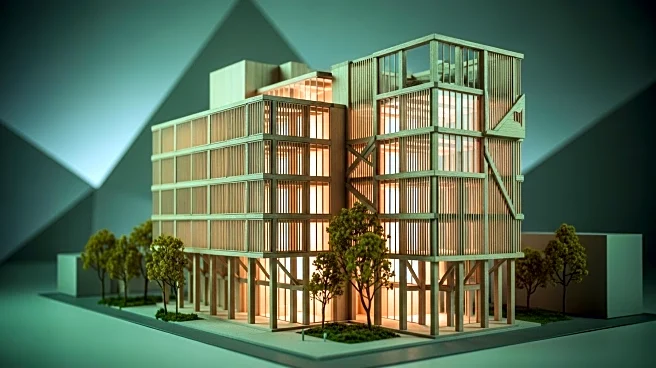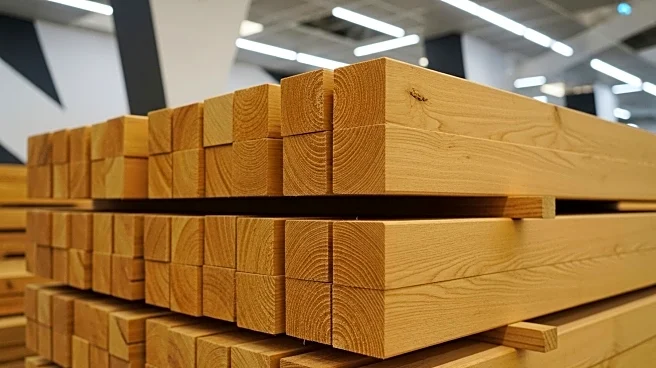What's Happening?
Canada is facing a dual crisis of housing shortages and high greenhouse gas emissions from construction materials like cement and steel. To tackle these issues, experts suggest adopting mass timber and modular manufacturing for building projects. Mass timber, which is renewable and stores carbon, offers a sustainable alternative to traditional materials. The Ascent tower in Milwaukee, the tallest mass timber building globally, serves as a model for this approach, demonstrating reduced construction time and significant carbon storage. Canada's housing completions are insufficient to meet demand, and traditional construction methods are exacerbating emissions. The proposed strategy involves treating housing construction like advanced manufacturing, using mass timber and modular methods to increase efficiency and reduce carbon footprint.
Why It's Important?
The shift to mass timber construction is crucial for Canada to meet its housing needs while reducing embodied carbon emissions. This approach not only addresses the housing crisis but also positions Canada as a leader in sustainable building practices. Mass timber construction can significantly cut emissions compared to concrete and steel, offering a net carbon storage solution. The strategy aligns with global trends, as demand for mass timber rises in the U.S., Europe, and Asia. Canada has the resources and expertise to capitalize on this market, potentially boosting its economy and environmental credibility. However, failure to act swiftly could result in missed opportunities as other countries advance their industries.
What's Next?
Canada must implement policies to support mass timber construction, including financial incentives for prefab builders and standardized designs. The government should act as an anchor customer, issuing contracts for modular mass timber housing. Training specialized workers and addressing insurance and code barriers are essential for scaling the industry. Internationally, Canada can expand its market share by aligning with global carbon accounting standards and decarbonizing the forestry supply chain. The focus should be on making mass timber a routine choice in construction, ensuring its advantages in cost, speed, and carbon storage are fully realized.
Beyond the Headlines
The adoption of mass timber construction has broader implications for Canada's industrial competitiveness and environmental leadership. It represents a shift towards a more sustainable and efficient construction industry, with potential export opportunities. The approach also challenges traditional building practices, requiring changes in workforce training and financial models. Long-term carbon storage strategies, such as designing for disassembly and reuse, are critical to maintaining timber's environmental benefits. Addressing fire safety concerns and standardizing building codes will be key to widespread acceptance of mass timber.













